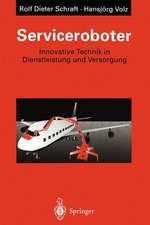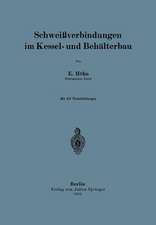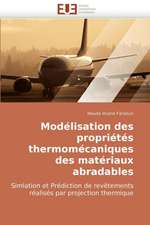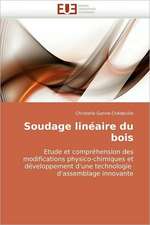Emerging Research in Alternative Crops: Environment & Policy, cartea 58
Editat de Abdelaziz Hirich, Redouane Choukr-Allah, Ragab Ragaben Limba Engleză Hardback – 16 sep 2020
Many regions in the world are suffering from water scarcity, soil and water salinization and climate change. These conditions make it difficult to achieve food security by cultivating conventional crops. A renaissance of interest for producing alternative crops under water scarcity and water salinization has been, therefore, implemented primarily among small-scale producers, researchers and academics.
The use of alternative crops (quinoa, amaranth,legume crops, halophytes, …etc.) may provide some environmental benefits such as valorization of salt-affected soils, reduced pesticide application, enhanced soil and water quality and promotion of wildlife diversity. This also may provide some economic benefits such as providing the opportunity for producers to take advantage of new markets and premium prices, spreading the economic risk and strengthening local economies and communities.
Furthermore, alternative crops are often rich in proteins and minerals, and even some of them are Gluten free (quinoa). This reflects their importance to achieve food security in quantity and quality scale. The year 2013 was exceptional for alternative crops as it was the international year of quinoa celebrated by Food and Agriculture Organization (FAO). This reflects the importance of research conducted on quinoa and other alternative crops in many regions of the world.
Din seria Environment & Policy
- 18%
 Preț: 783.68 lei
Preț: 783.68 lei - 15%
 Preț: 641.20 lei
Preț: 641.20 lei -
 Preț: 402.77 lei
Preț: 402.77 lei -
 Preț: 407.01 lei
Preț: 407.01 lei - 15%
 Preț: 641.85 lei
Preț: 641.85 lei - 18%
 Preț: 955.08 lei
Preț: 955.08 lei - 18%
 Preț: 944.82 lei
Preț: 944.82 lei - 15%
 Preț: 650.19 lei
Preț: 650.19 lei - 18%
 Preț: 952.89 lei
Preț: 952.89 lei - 15%
 Preț: 642.68 lei
Preț: 642.68 lei - 18%
 Preț: 1227.36 lei
Preț: 1227.36 lei - 18%
 Preț: 1226.90 lei
Preț: 1226.90 lei - 15%
 Preț: 642.18 lei
Preț: 642.18 lei - 15%
 Preț: 641.53 lei
Preț: 641.53 lei - 15%
 Preț: 643.48 lei
Preț: 643.48 lei -
 Preț: 385.25 lei
Preț: 385.25 lei - 20%
 Preț: 335.52 lei
Preț: 335.52 lei - 15%
 Preț: 640.88 lei
Preț: 640.88 lei - 15%
 Preț: 638.43 lei
Preț: 638.43 lei - 15%
 Preț: 636.12 lei
Preț: 636.12 lei - 18%
 Preț: 941.50 lei
Preț: 941.50 lei - 18%
 Preț: 946.55 lei
Preț: 946.55 lei - 18%
 Preț: 945.30 lei
Preț: 945.30 lei - 18%
 Preț: 948.29 lei
Preț: 948.29 lei - 18%
 Preț: 959.19 lei
Preț: 959.19 lei - 18%
 Preț: 957.44 lei
Preț: 957.44 lei - 18%
 Preț: 955.70 lei
Preț: 955.70 lei - 15%
 Preț: 639.90 lei
Preț: 639.90 lei
Preț: 1009.54 lei
Preț vechi: 1231.15 lei
-18% Nou
Puncte Express: 1514
Preț estimativ în valută:
193.17€ • 202.23$ • 159.84£
193.17€ • 202.23$ • 159.84£
Carte tipărită la comandă
Livrare economică 07-21 aprilie
Preluare comenzi: 021 569.72.76
Specificații
ISBN-13: 9783319904719
ISBN-10: 331990471X
Pagini: 390
Ilustrații: XII, 376 p. 137 illus., 94 illus. in color.
Dimensiuni: 155 x 235 mm
Greutate: 0.72 kg
Ediția:1st ed. 2020
Editura: Springer International Publishing
Colecția Springer
Seria Environment & Policy
Locul publicării:Cham, Switzerland
ISBN-10: 331990471X
Pagini: 390
Ilustrații: XII, 376 p. 137 illus., 94 illus. in color.
Dimensiuni: 155 x 235 mm
Greutate: 0.72 kg
Ediția:1st ed. 2020
Editura: Springer International Publishing
Colecția Springer
Seria Environment & Policy
Locul publicării:Cham, Switzerland
Cuprins
The Contribution of Alternative Crops to Food Security in Marginal Environments.- Grain Legumes May Enhance High-Quality Food Production in Europe.- Hypersaline Water for Alternative Crop Irrigation in Iran. Amending Soil Health to Improve Productivity of Alternate Crops in Marginal Sandy Soils of the UAE.- The Extraordinary Salt Tolerance of Quinoa. Cultivation of Quinoa (Chenopodium quinoa) in Desert Ecoregion.- Phenotyping the Combined Effect of Heat and Water Stress on Quinoa.- Root and Shoot Relation of the Quinoa and Forage Plants in Salt-Affected Clay Soil.- Cañahua (Chenopodium pallidicaule): A Promising New Crop for Arid Area.- Response of Amaranthus sp. to Salinity Stress: A Review.- Tef (Eragrostis tef): A Superfood Grain from Ethiopia with Great Potential as an Alternative Crop for Marginal Environments.- Safflower: A Multipurpose Crop for the Marginal Lands.- Jatropha Plantation in Oman.- Crop Potentialof Six Salicornia bigelovii Populations Under Two Salinity Water Treatments Cultivated in a Desert Environment: A Field Study.- The Potential of Cactus Pear (Opuntia ficus-indica (L.) Mill.) as Food and Forage Crop.- Replacement of Saffron (Crocus sativus L.) with Poppy (Papaver somniferum L.) and Its Socioeconomic Impact in Afghanistan
Notă biografică
Abdelaziz Hirich is a research scientist at ICBA center in UAE. He received his PhD in Agronomic Science at the University HASSAN II in Casablanca, Morocco. Dr. Hirich has worked after his PhD as a consultant in EU funded GLOBAQUA project and as a scientist in ICBA center. He is interested in irrigation management, reuse of treated wastewater, salinity, and climate change. Dr. Hirich has published about 17 journal papers. He has developed a large knowledge on irrigation and fertigation scheduling and management as well as the reuse of treated wastewater especially in dry areas. He worked on the introduction of quinoa in Morocco within the EU funded SWUPMED project (2009-2013) where he adapted quinoa to the southern Morocco conditions and tested its response to deficit irrigation and salinity. Hirich has also conducted several training, SALTMED training in Oxford-UK, Agricultural policies in Bari-Italy. He worked also as a consultant for several private study companies in irrigation project design, capacity building training and other agriculture related project. Dr. Hirich is collaborating with two senior scientists to publish this edited volume with Springer; Prof. Redouane Choukr-Allah and Prof. Ragab Ragab.
Redouane Choukr-Allah is a soil and water environmental expert with more than 25 years of experience in coordinating and managing field-based projects and technical teams involved in site specific activities. Prof. Choukr-Allah has extensive experience in use of saline water and the use of pre-treated sewage in agriculture, and soil and ground water pollution prevention.
Ragab Ragab (former AE of AJGS) is the Head of Water, Soils and Landscapes Group at Centre for Ecology & Hydrology in Oxfordshire, UK. Prof. Ragab is a leader of several projects in the UK and overseas. He is an expert reviewer for the Intergovernmental Panel for Climate Change (IPCC), International adviser to UNDP, “Brazil National Institute for Salinity Research”, Fortaleza, Brazil, Lecturer at Oxford University, External examiner to various Universities in and outside the UK. Prof. Ragab is recipient of several international awards and reviewer for more than 15 International Journals and evaluator for several funding organizations.
Redouane Choukr-Allah is a soil and water environmental expert with more than 25 years of experience in coordinating and managing field-based projects and technical teams involved in site specific activities. Prof. Choukr-Allah has extensive experience in use of saline water and the use of pre-treated sewage in agriculture, and soil and ground water pollution prevention.
Ragab Ragab (former AE of AJGS) is the Head of Water, Soils and Landscapes Group at Centre for Ecology & Hydrology in Oxfordshire, UK. Prof. Ragab is a leader of several projects in the UK and overseas. He is an expert reviewer for the Intergovernmental Panel for Climate Change (IPCC), International adviser to UNDP, “Brazil National Institute for Salinity Research”, Fortaleza, Brazil, Lecturer at Oxford University, External examiner to various Universities in and outside the UK. Prof. Ragab is recipient of several international awards and reviewer for more than 15 International Journals and evaluator for several funding organizations.
Textul de pe ultima copertă
This book provides case studies on cultivating alternative crops and presents new cropping systems in many regions of the world. It focusses on new emerging research topics aiming to study all aspects of adaptation under several stresses including agricultural, environmental, biological and socioeconomic issues. The book also provides operational and practical solutions for scientists, producers, technology developers and managers to succeed the cultivation of new alternative crops and, consequently, to achieve food security.
Many regions in the world are suffering from water scarcity, soil and water salinization and climate change. These conditions make it difficult to achieve food security by cultivating conventional crops. A renaissance of interest for producing alternative crops under water scarcity and water salinization has been, therefore, implemented primarily among small-scale producers, researchers and academics.
The use of alternative crops (quinoa, amaranth,legume crops, halophytes, …etc.) may provide some environmental benefits such as valorization of salt-affected soils, reduced pesticide application, enhanced soil and water quality and promotion of wildlife diversity. This also may provide some economic benefits such as providing the opportunity for producers to take advantage of new markets and premium prices, spreading the economic risk and strengthening local economies and communities.
Furthermore, alternative crops are often rich in proteins and minerals, and even some of them are Gluten free (quinoa). This reflects their importance to achieve food security in quantity and quality scale. The year 2013 was exceptional for alternative crops as it was the international year of quinoa celebrated by Food and Agriculture Organization (FAO). This reflects the importance of research conducted on quinoa and other alternative crops in many regions of the world.
Many regions in the world are suffering from water scarcity, soil and water salinization and climate change. These conditions make it difficult to achieve food security by cultivating conventional crops. A renaissance of interest for producing alternative crops under water scarcity and water salinization has been, therefore, implemented primarily among small-scale producers, researchers and academics.
The use of alternative crops (quinoa, amaranth,legume crops, halophytes, …etc.) may provide some environmental benefits such as valorization of salt-affected soils, reduced pesticide application, enhanced soil and water quality and promotion of wildlife diversity. This also may provide some economic benefits such as providing the opportunity for producers to take advantage of new markets and premium prices, spreading the economic risk and strengthening local economies and communities.
Furthermore, alternative crops are often rich in proteins and minerals, and even some of them are Gluten free (quinoa). This reflects their importance to achieve food security in quantity and quality scale. The year 2013 was exceptional for alternative crops as it was the international year of quinoa celebrated by Food and Agriculture Organization (FAO). This reflects the importance of research conducted on quinoa and other alternative crops in many regions of the world.
Caracteristici
Offers step-by-step procedures for better agricultural practices for alternative crops cultivation under droughts and soil and water salinity Provides a selection of adapted crops and genotypes to specific regions in the world Includes case studies that focus on evaluating the response of alternative crops to biotic and abiotic stress






















